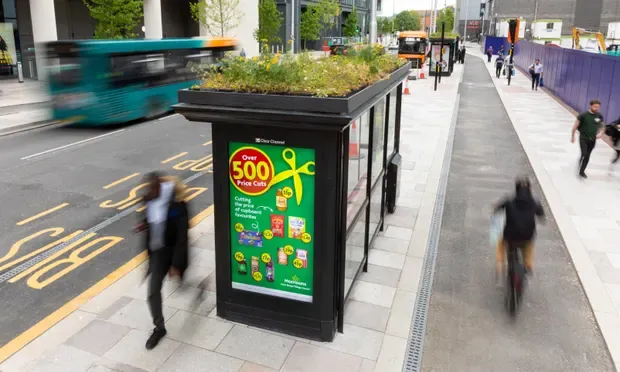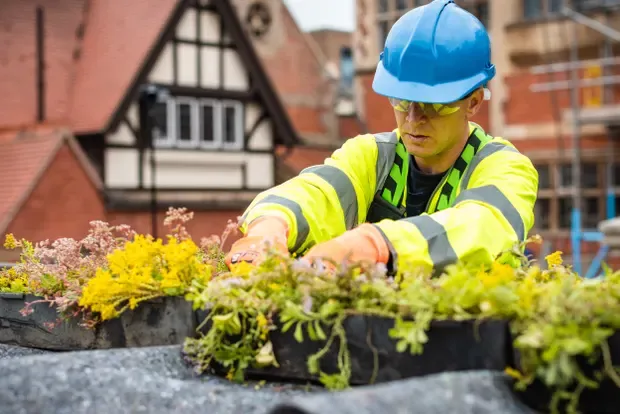
The phenomenon known as bee bus stops first appeared in Utrecht, a city in the Netherlands but now it’s spreading through the UK, Europe, Canada and Australia. Bee bus stops are simply ordinary bus shelters, but on the roof lies a miniature garden, filled with plants pollinators love, such as poppies, pansies and wild strawberries. By the end of this year, these kinds of bus stops are set to increase by 50% in the UK.
Since 2021, Leicester is taking the lead with 30 bee bus stops. Other cities like Newcastle, Oxford and Glasgow also have set up bee bus stops and in Brighton one was installed after 50 000 people signed a petition to do so.
“We want to do it in as many cities in the UK as possible,” said Louise Stubbings, creative director at Clear Channel UK, which manages 30,000 commercial shelters on behalf of councils to The Guardian.
These bus shelters last for at least 20 years. Ones with living roofs have to be specially designed because the soil is so heavy, especially when it is full of water, and they are only installed where shelters need replacing.
“We don’t want to rip perfectly good shelters out of the ground to put a new one in. You have to be really considerate and mindful with planning these things and making sure the good they’re providing really is good,” said Stubbings.
Clear Channel wants to set up at least 1 000, and hopefully more, bee bus stops in the UK. Clear Channel's bus stops are already established in the Netherlands, Sweden and Denmark. They are building them in France and Belgium later this year (2022). Canada and Australia have also sent inquiries to get bee bus stops.
“We want to roll this out to as many countries as possible. We see this as a long-term, scalable addition to our bus shelters. We’d like to do them everywhere, the positive effects are incredible,” said Stubbings.
Wildlife Trust are working together with Clear Channel to maximize the bus stops' advantage to wildlife. Native flowers like kidney vetch, thyme and marjoram have been chosen to attract many different pollinators such as common carder bees, buff-tailed bumblebees, peacock butterflies, small tortoiseshell butterflies and chequered hoverflies.
Besides helping pollinators, the bus stops also absorb rainwater and help with offsetting the urban heat island effect.
The bee bus stops require very little maintenance. Only a twice-yearly weed and trim. The gardens have not yet reached maximum growth and visibility.

Picture: Clear Channel via The Guardian




